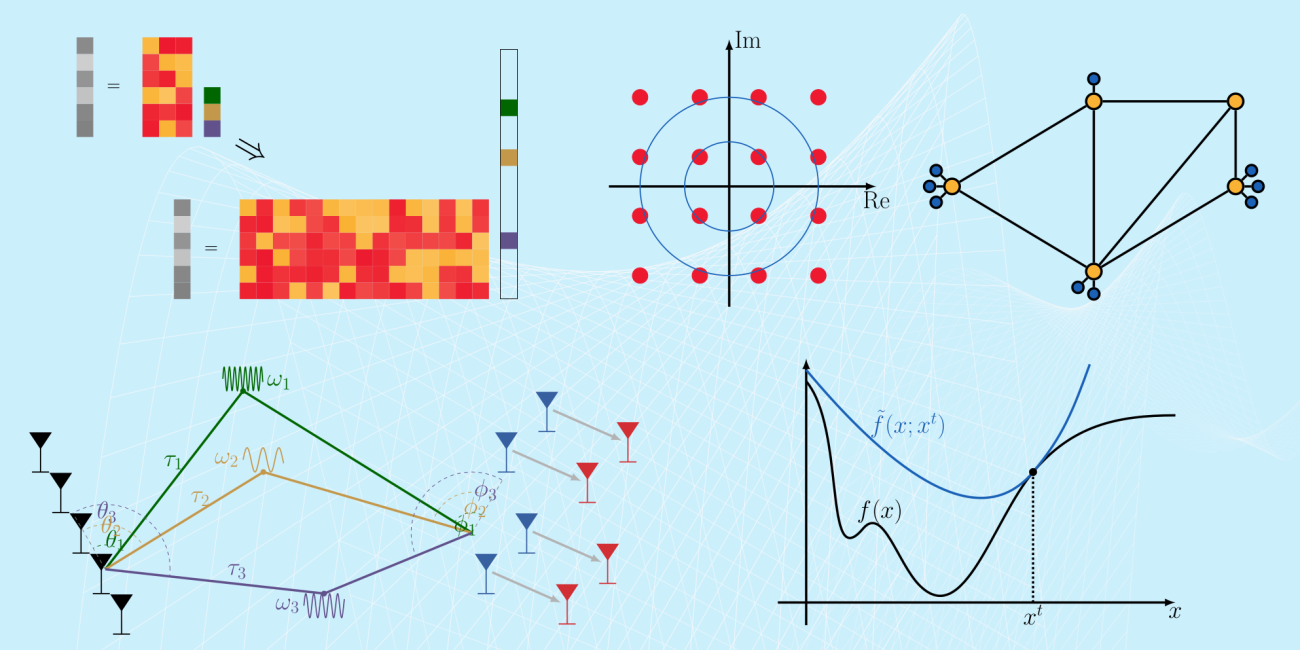For practical validation of our theoretical results we have several testbed that admit implementation and testing of our developed algorithms. For algorithms in physical layer ans array signal processing we make use of the WARP testbed, which is a Software Defined Radio (SDR) with an easy to use Matlab interface.
WARP v3 MIMO Testbed
The WARP v3 by Mango Communications is a highly flexible hardware platform for research on wireless communications. It allows testing physical layer algorithms like MIMO transmission or array signal parameter estimation in practical scenarios by transmitting over real wireless channels. In this manner, we can validate algorithms under investigation in more detail than with mere computer simulations.
The key features of the WARP kit are a powerful Xilinx Virtex-6 FPGA which allows real-time processing of complex algorithms and advanced MIMO capabilities with up to four antennas which can be used in receive or transmission mode. For simple and rapid prototyping the WARP kit offers an easy to use Matlab interface called WARPLab. With this the baseband signal processing is performed offline on a computer, which is connected to the boards via ethernet adapters. In this way simulation models created in Matlab can easily be extended to make use of the testbed and first tests can be performed to use real wireless channels.
For advanced operation the boards can be programmed directly such that all baseband processing is performed on the boards' FPGAs. In this manner the algorithms' reaction to fast changing environments can be investigated. This approach also requires that the complexity of the algorithms is kept reasonable low such that these are feasible for practical applications. For the implementation we make use of Xilinx System Generator which is an easy to use interface for Matlab Simulink. This allows a simple block based design of the models under investigation.
The WARP v3 RF interfaces are designed for dual-band 802.11a/g applications covering world-bands of 2.4GHz to 2.5GHz and 4.9GHz to 5.875GHz. As such, the boards can be operated with carrier frequencies as defined in the 802.11 specifiactions, e.g., on the channels 1-14 for 802.11g.
For further measurements on the physical layer signals we use the Agilent Technologies MXA N9020A signal analyzer and MXG N5182A signal generator. In this way we are able to generate arbitrary signals and to perform detailed analysis of the transmitted and received signals in the spectral and signal space domain.
Vibration faults simulation testbed
Locating the mechanical defects in industrial machineries, automobiles, heavy vehicles, etc., using the conventional techniques are tedious and time-consuming. However, we can exploit the fact that different machinery faults give rise to vibration signals having different spatio-temporal frequency characteristics, and transform the exhausting manual tasks into signal processing tasks. With the advanced digital signal processing techniques, we can automate machinery faults detections, to locate the faults in real time with a very high accuracy.
The testbed consists of a machinery fault simulator along with four accelerometers, a data acquisition module (DAQ), and a user interface. One can readily implant artificial machinery faults such as bearing faults, gearbox defects, shaft misalignment, load imbalance, etc., into the simulator. The accelerometers, which are strategically placed on the simulator, collect the vibration signals generated by the simulator, and transmit them to the DAQ. The DAQ performs necessary filtering and converts analog signals to digital signals, and transfers the digital data to the connected PC. Subsequently, advanced digital signal processing will be performed on the data to detect, and locate the faults. A dictionary of vibration signatures can be constructed to automate the classification of the faults.








